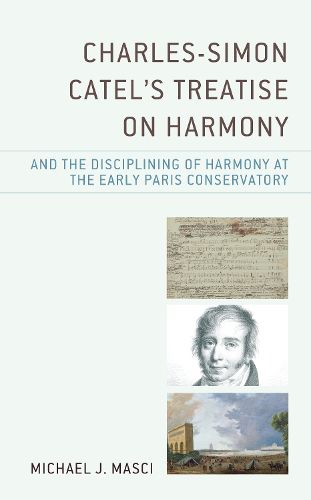Readings Newsletter
Become a Readings Member to make your shopping experience even easier.
Sign in or sign up for free!
You’re not far away from qualifying for FREE standard shipping within Australia
You’ve qualified for FREE standard shipping within Australia
The cart is loading…






Charles-Simon Catel's Treatise on Harmony and the Disciplining of Harmony at the Early Paris Conservatory traces the formation of the discipline of harmony at the early Paris Conservatory, focusing on the seminal 1801 treatise of the school's inaugural harmony professor, Charles-Simon Catel. By examining the forces that shaped Catel's text and the discipline of harmony more broadly, Michael J. Masci reconstitutes the contours of the dynamic "disciplinary network," forged by music theoretical and wider cultural forces alike, that determined the content and scope of the study of harmony in Paris. The institutional forces that bound the Conservatory to the Opera and French military accrued to Catel's authority as a music theorist while the internal hierarchies of the Conservatory would ensure the transmission of his ideas through the middle of the nineteenth century. This book continues in the model of recent partimento scholarship by excavating the catalog of figures and techniques that formed the foundation of the Conservatory's harmony course, expanding our understanding of practical harmony traditions beyond those of eighteenth-century Italy.
$9.00 standard shipping within Australia
FREE standard shipping within Australia for orders over $100.00
Express & International shipping calculated at checkout
Charles-Simon Catel's Treatise on Harmony and the Disciplining of Harmony at the Early Paris Conservatory traces the formation of the discipline of harmony at the early Paris Conservatory, focusing on the seminal 1801 treatise of the school's inaugural harmony professor, Charles-Simon Catel. By examining the forces that shaped Catel's text and the discipline of harmony more broadly, Michael J. Masci reconstitutes the contours of the dynamic "disciplinary network," forged by music theoretical and wider cultural forces alike, that determined the content and scope of the study of harmony in Paris. The institutional forces that bound the Conservatory to the Opera and French military accrued to Catel's authority as a music theorist while the internal hierarchies of the Conservatory would ensure the transmission of his ideas through the middle of the nineteenth century. This book continues in the model of recent partimento scholarship by excavating the catalog of figures and techniques that formed the foundation of the Conservatory's harmony course, expanding our understanding of practical harmony traditions beyond those of eighteenth-century Italy.